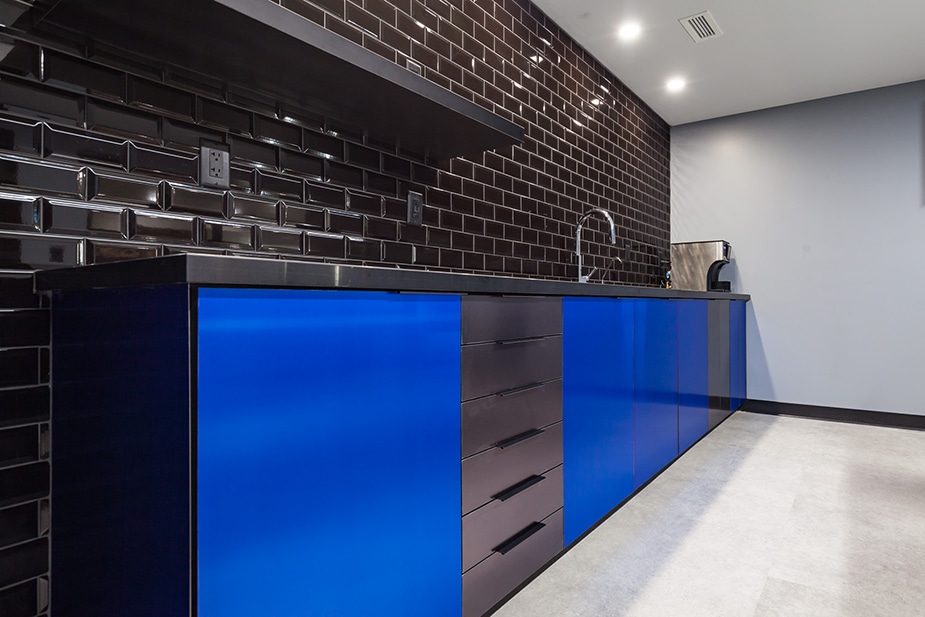In today’s health-conscious environment, the use of antimicrobial surfaces in high-touch areas is becoming increasingly vital. These surfaces can significantly reduce the spread of harmful pathogens and contribute to overall public health.
Enhanced Infection Control
Antimicrobial surfaces actively combat microbial growth.
These surfaces contain agents that inhibit the reproduction of bacteria, viruses, and fungi. By reducing the microbial load in high-touch areas, such as doorknobs, handrails, and light switches, these materials help decrease the risk of infections. This is particularly important in settings like hospitals, schools, and public transport where the frequency of contact is high. Implementing these surfaces can lead to lower infection rates, resulting in better health outcomes and reduced healthcare costs. Therefore, antimicrobial surfaces serve as a proactive measure in infection control strategies.
Durability and Longevity
Antimicrobial surfaces are designed for durability.
Unlike traditional materials, which may wear down or lose effectiveness over time, antimicrobial surfaces are engineered to withstand heavy use without compromising their protective qualities. This resilience means they require less frequent replacement and maintenance, providing a cost-effective solution in high-traffic areas. Their long-lasting nature ensures continuous protection against microbial growth, making them an ideal choice for various environments. Facilities can benefit from lower operational costs while maintaining high health standards. Thus, durability adds significant value to the adoption of antimicrobial technologies.
Reduction of Cross-Contamination
These surfaces minimize the risk of cross-contamination.
High-touch areas are notorious for being hotbeds of germ transfer. By using antimicrobial materials, facilities can significantly reduce the chances of transferring pathogens from one individual to another. This is crucial in places like hospitals, where vulnerable patients are at greater risk. Studies have shown that surfaces treated with antimicrobial agents have fewer pathogens present compared to untreated surfaces. Consequently, this not only protects individuals but also contributes to community health initiatives and reduces the burden on healthcare systems.
Improved Public Perception
The presence of antimicrobial surfaces can enhance public confidence.
In an era where cleanliness and hygiene are paramount, visible sanitary measures can improve public perception of facilities. Antimicrobial surfaces signal to visitors and staff that health and safety are priorities, which is particularly important for businesses in the service industry. This positive impression can influence customer choices, boosting loyalty and patronage. Moreover, facilities that invest in advanced hygiene solutions are often viewed as leaders in health standards, giving them a competitive edge in their respective sectors. Therefore, the psychological benefits of using antimicrobial surfaces should not be underestimated.
Compliance with Health Regulations
Antimicrobial surfaces can assist in meeting health regulations.
Many industries are subject to strict health and safety guidelines that require the implementation of measures to reduce microbial risks. By investing in antimicrobial surfaces, organizations can more easily comply with these regulations, thus avoiding potential fines and penalties. This proactive approach showcases a commitment to safety and health, fostering a culture of responsibility within the facility. Additionally, these surfaces create an environment where regulatory inspections can be conducted more smooThe Importance of Antimicrobial Surfaces in High-Touch Areasthly. Staying ahead of compliance issues also enhances the overall reputation of a facility.
Cost-Effectiveness Over Time
Investing in antimicrobial surfaces leads to long-term savings.
Although the initial cost of antimicrobial surfaces may be higher than traditional materials, the long-term financial benefits outweigh these expenses. Reduced sick leave and healthcare costs, along with minimal replacements and maintenance, contribute to overall savings. Facilities that prioritize health often experience fewer disruptions from illness, resulting in increased productivity and operational efficiency. These long-term savings can be pivotal for businesses, as maintaining a healthy workforce is essential for sustained success. Hence, a strategic investment in antimicrobial surfaces proves economically advantageous.
Sustainability Considerations
Many antimicrobial surfaces are designed with sustainability in mind.
With an increasing focus on environmental responsibility, manufacturers are developing antimicrobial materials that are eco-friendly and sustainable. These innovations often incorporate recycling initiatives and minimize harmful chemical use, aligning with global sustainability goals. Moreover, by prolonging the lifespan of surfaces and reducing waste from frequent replacements, facilities can lower their environmental footprint. Thus, adopting antimicrobial technologies not only enhances health safety but also supports broader environmental objectives. Sustainability further enhances the appeal of antimicrobial surfaces in modern facility management.
Choosing antimicrobial surfaces for high-touch areas is a strategic decision that offers numerous health, economic, and environmental benefits. By investing in these innovative materials, organizations can enhance infection control, improve public perception, and ultimately contribute to a healthier society.

